Photographs taken 2014
Botallack Mine and "The Crowns", as the two prominent engine houses tend to be referred to, are perhaps the most well known and spectacularly situated old mine workings in Cornwall. They are certainly among the most iconic of Cornish Mining World Heritage sites. The lower of the two engine houses is in fact the Crowns Engine House, and the slightly higher right hand one of the two is the engine house for the equally spectacular Boscawen Diagonal Shaft, that literally descends into the cliffs and out under the sea at an angle of 32.5 degrees. The "Botallack Mine" as referred to now, is made up of the earlier smaller mines of Wheal Cock, Crowns Mine, Carnyorth Mine and Parknoweth Mine. As mining ventures during the 1800s came and went, or merged, so did often their respective names. Both copper and tin have been mined at Botallack Mine over its history, as well as some by-products such as arsenic. All these mines are in the St Just mining area in West Penwith, as are the mines just up the coast at Levant Mine (with its still working Cornish Beam Engine), and Geevor Mine (one of the last working and oldest tin mines in Cornwall - tin workings have existed here for perhaps as many as 4000 years). Geevor Mine closed only relatively recently in 1990, and is now a significant monument to the long history of Cornish mining, where you can take an underground tour of an old tin mine, and of the modern tin works.
The old miners' track down to the mines at Botallack is still well used by visitors, following the footsteps of miners who no doubt had little time for the scenery, and had greater worries on their minds of the job in hand. The following two photographs give a good comparison of the scene today, and as it was when the mines were a hive of industry. It is sobering to think of the industrial noise and hard graft that went on in what is now such a rugged and peaceful place.
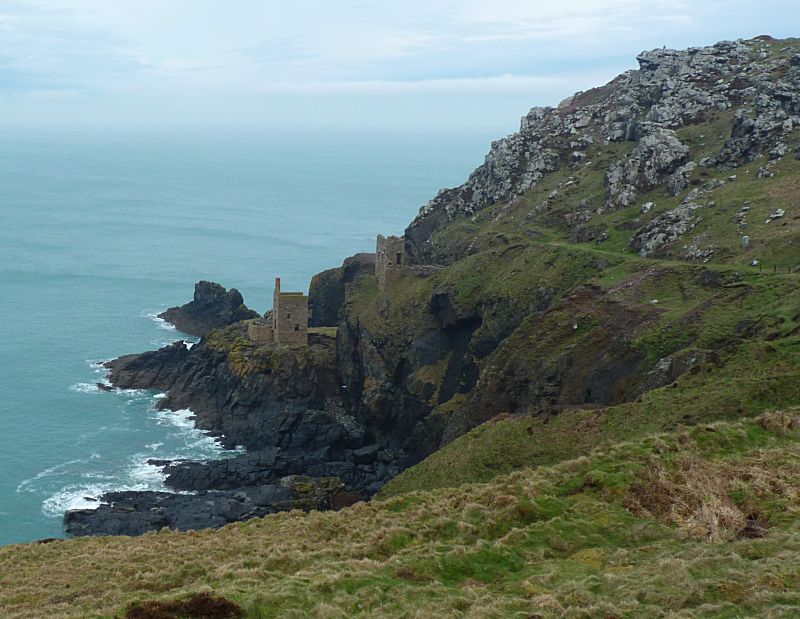
Botallack and The Crowns as it is today - taken not far from where
the old photograph below was taken
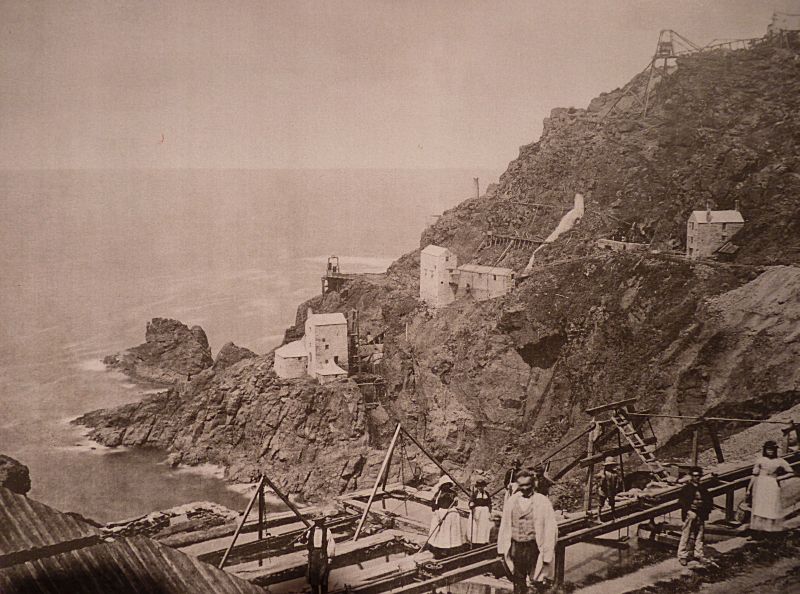
Botallack Mine and The Crowns as it was in the 1860s - from a
display photo at Geevor Mine
The same scene as above showing the wider view. The cliff tops here were the sites of the mines' ore processing works.
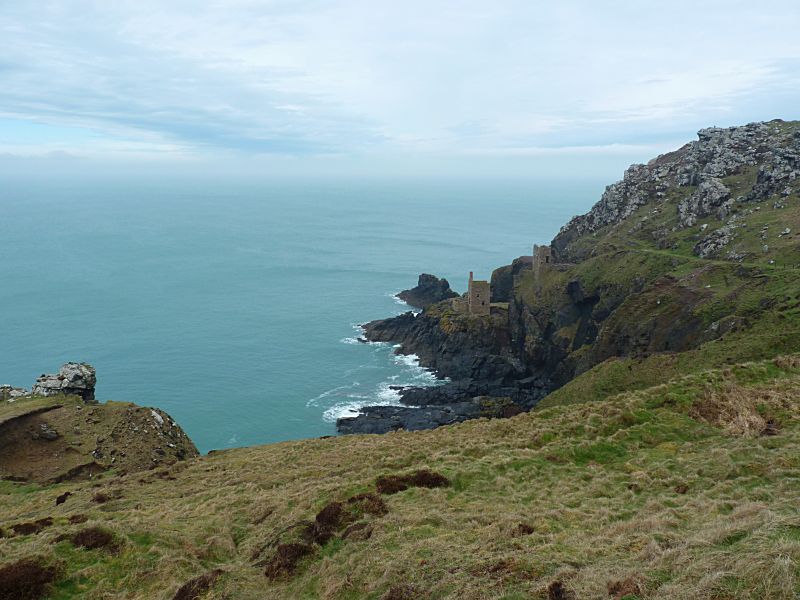
The Botallack Mines - a wider view
Looking closer, it is possible to appreciate the apparently precarious nature of these mine engine houses' locations. Although the hard granite rocks give a solid foundation for the buildings, the sea is very close at hand. On stormy days, and high tides, it would have seemed much closer still. These mines would not have been easy places to work.
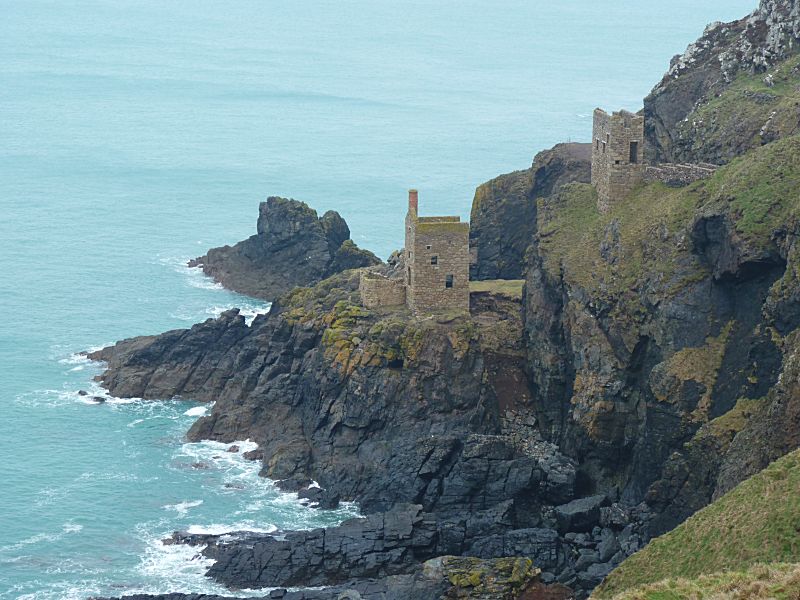
Closing in on the two engine houses of the Crowns Engine Shaft and
Boscawen Diagonal Shaft
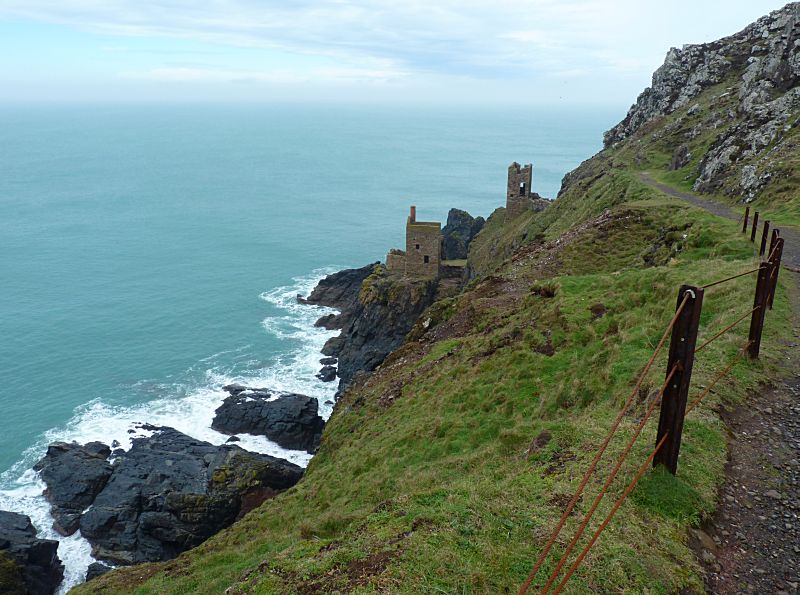
Following the old miners' track down to the mines
The Crowns Engine House was used for a pumping engine - an old Cornish Beam Engine - to pump water out of the mines to keep them from flooding. This would be necessary for any mine, but maybe more so for mines extending out under the sea. Not for any breach of the sea into the tunnels, but from natural seepage of water coming through crevices in the rocks. However, perhaps more surprisingly, the Botallack Mine has always been known as a particularly dry mine.
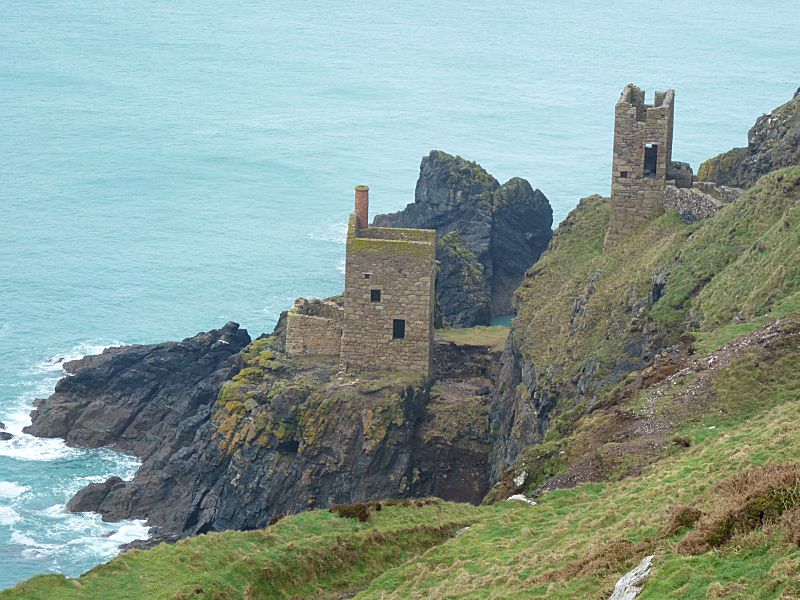
Nearing the two engine houses
It was fashionable - if that is the right phrase - during Victorian times, for some keen early tourists to visit a mine. One such visit was made by the writer Wilkie Collins on his walking tour of Cornwall in 1850. He wrote of this in his excellent book "Rambles Beyond Railways" published in 1851, and it includes a visit to Botallack Mine. This would have been before the Boscawen diagonal shaft was sunk, and the visit took place down one of the vertical shafts, possibly Wheal Button Shaft or a ladder-way down Crowns Shaft. His description of a what it was like down the mine is highly evocative; it is a first hand account of what it must have been like at the time, and the kind of working life Cornish Miners faced...
"The process of getting down the ladders was not very pleasant. They were all quite perpendicular, the rounds were placed at irregular distances, where many of them much worn away, and were slippery with water and copper-ooze. Add to this, the narrowness of the shaft, the dripping wet rock shutting you in, as it were, all round your back and sides against the ladder - the fathomless darkness beneath - the light [from the candle on your hat] flaring immediately above you, as if your head was on fire - the voice of the miner below, rumbling away in dull echoes lower and lower into the bowels of the earth - the consciousness that if the rounds of the ladder broke, you might fall down a thousand feet or so of narrow tunnel in a moment - imagine all this, and you may easily realize what are the first impressions produced by a descent into a Cornish mine."
His experiences do not end there; he talks of hearing the sound of the ocean above while venturing four hundred yards out along one of the many galleries (levels) under the sea, down below the twenty fathom level (120 feet below sea level)...
"After listening for a few moments, a distant, unearthly noise becomes faintly audible - a long, low, mysterious moaning, which never changes, which is felt on the ear as well as heard by it - a sound that might proceed from some incalculable distance, from some far invisible height - a sound so unlike anything that is heard on the upper ground, in the free air of heaven; so sublimely mournful and still; so ghostly and impressive when listened to in the subterranean recesses of the earth, that we continue instinctively to hold our peace, as if enchanted by it, and think not of communicating to each other the awe and astonishment which it has inspired in us from the very first."
The miner guiding them goes on to tell Wilkie Collins and his companion that this is the sound of the surf lashing the rocks above, and of the waves breaking on the beach beyond, but this is when the sea is in no state of agitation...
..."But when storms are at their height, when the ocean hurls mountain after mountain of water on the cliffs, then the noise is terrific; the roaring heard down here in the mine is so inexpressibly fierce and awful, that the boldest men at work are afraid to continue their labour. All ascend to the surface, to breathe the upper air and stand on the firm earth: dreading, though no such catastrophe has ever happened yet, that the sea will break in on them if they remain in the caverns below."
Back in the mine office in the Counting House - at that time this was still half-way down the cliff - their miner guide went on to describe a miner's lot in the world...
"It's hard work we have to do, sir... harder work than people think, down in the heat and darkness underground. We may get a good deal at one time, but we get little enough at another; sometimes mines are shut up, and then we are thrown out altogether - but, good work or bad work, or no work at all, what with our bits of ground for potatoes and greens, and what with cheap living, somehow we and our families make it do. We contrive to keep our good cloth coat for Sundays, and go to chapel in the morning - for we're most of us Wesleyans - and then to church in the afternoon; so as to give 'em both their turn like! We never go near the mine on Sundays, except to look after the steam pump: our rest, and our walk in the evening once a week, is a good deal to us. That's how we live, sir; whatever happens, we manage to work through, and don't complain!"
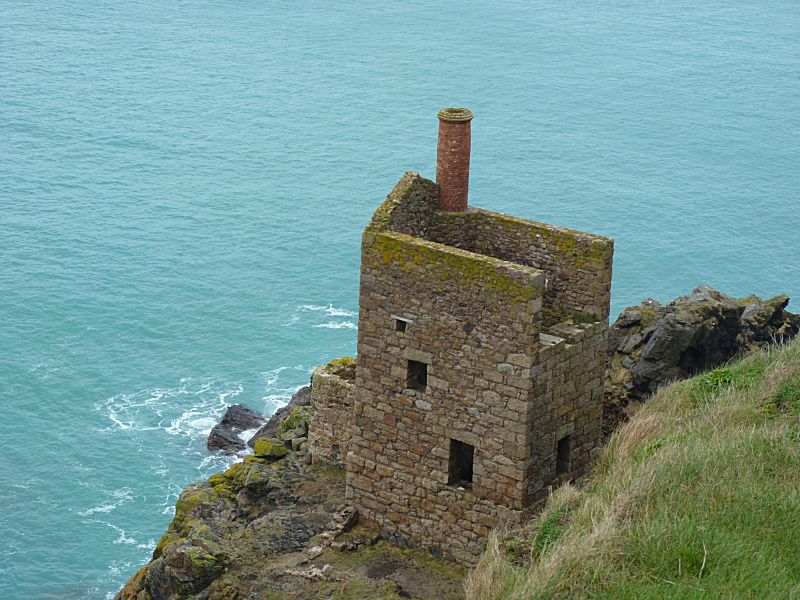
The Crowns Pumping Engine and Shaft - the shaft was just to the
right in front as seen from here
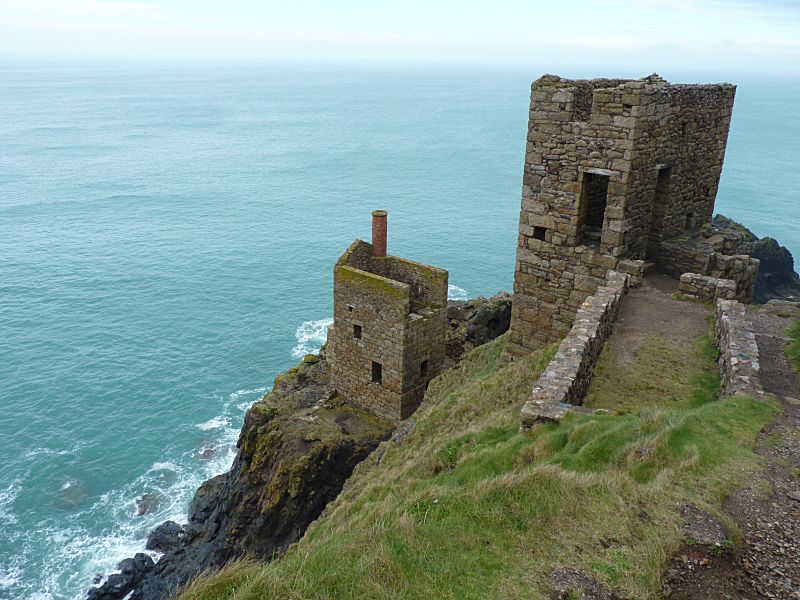
Approaching the engine house for the Boscawen Diagonal Shaft
A vertical section through the mine can be seen in the drawing below, with the Boscawen Diagonal Shaft clearly shown descending into the rocks not far above the sea shore. It was this shaft that was famously visited on the 24th July 1865, and entered by the then future King Edward VII and Queen Alexandra. Not a run-of-the-mill type of Royal Visit I suspect! The shaft itself was begun in 1858, was sunk for a total distance of 2,616 feet, and reached a final depth of 1,360 feet below sea level. The mine's workings extended for 2,580 feet under the sea beyond the cliffs - half a mile.
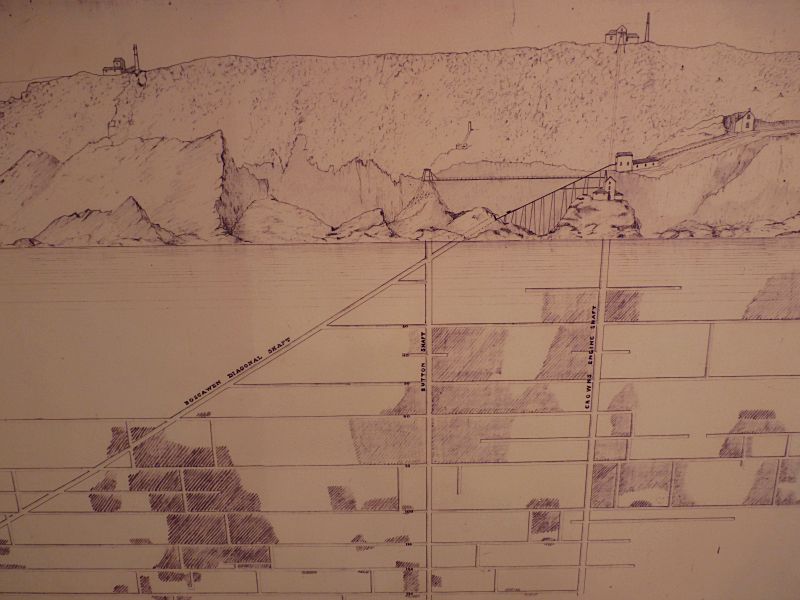
The section of the mines under the Crowns - taken from a display
photo at Geevor Mine
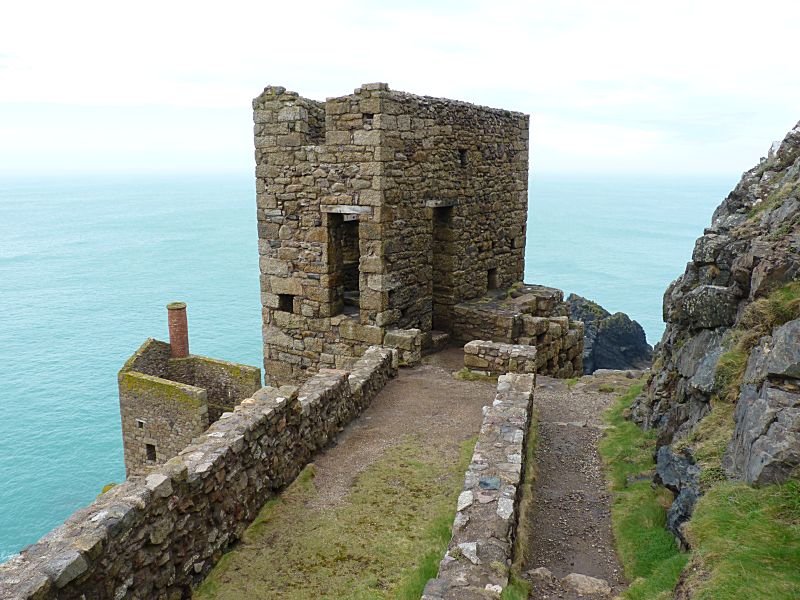
Approaching the Winding Engine House itself - the track for the
diagonal shaft went down to the right
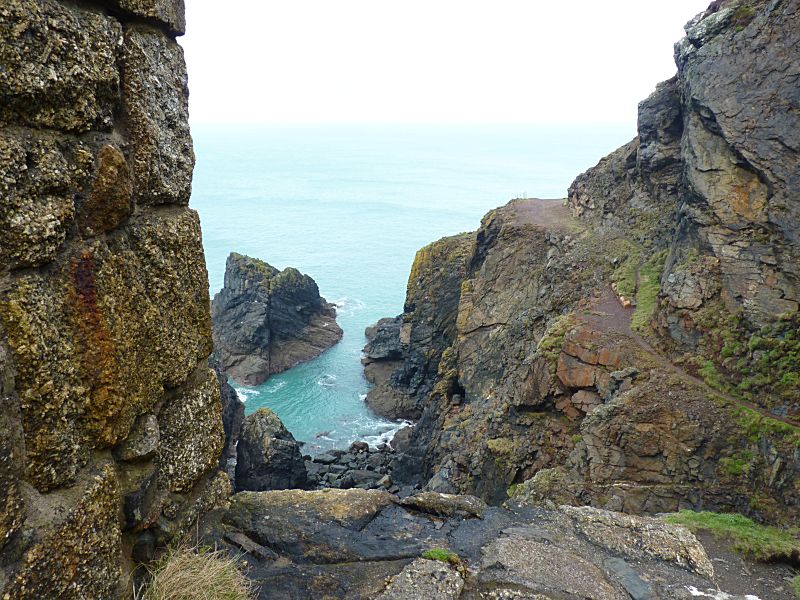
Looking down from the Winding Engine House - the shaft entrance can
be made out in the rock face just
to the right of centre (there
is a boulder perched in the entrance). You can see below how it
was...
Lorem ipsum dolor sit amet, consectetur adipiscing elit. Nunc feugiat magna et mi semper rutrum. Sed elementum semper tincidunt. Curabitur consequat, sapien non consectetur elementum. Lorem pellentesque habitant morbi tristique senectus et netus et malesuada fames ac turpis egestas. Vestibulum tortor quam, feugiat vitae, ultricies eget, tempor sit amet, ante. Donec eu libero sit amet quam egestas semper. Aenean ultricies mi vitae est. Mauris placerat eleifend leo. Quisque sit amet est et sapien ullamcorper pharetra.
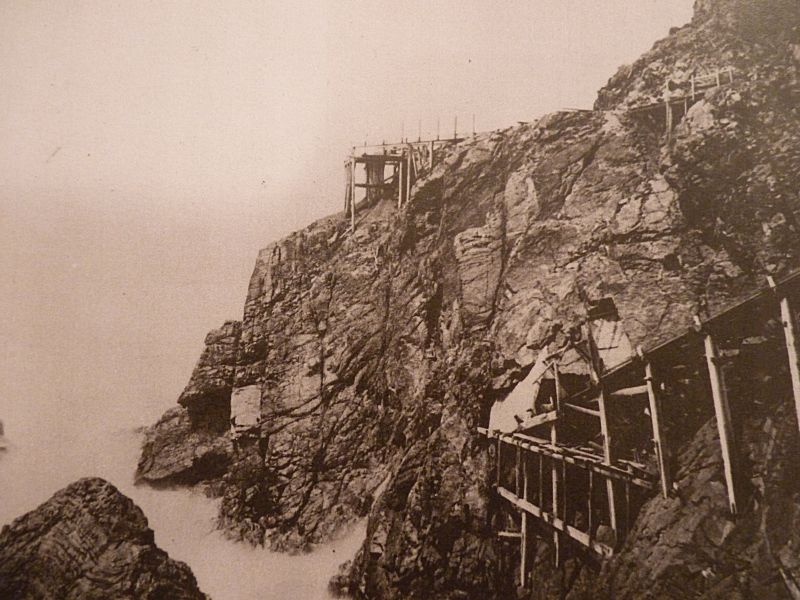
Trestles for the trackway into the Boscawen Diagonal Shaft - taken
from another display photo at
Geevor Mine
(compare the rock formation above the shaft with that in the
previous photo)
The wooden structure at the shaft entrance is an
attempt to keep any excess seas at bay.
The spectacular engine houses of The Crowns at Botallack are not the only remaining buildings on the site, and the mining activities underground were supported by just as much activity above ground - "at grass" as the miners would say...
Surface Workings and Ore Processing
Some of the best preserved ore processing remains at Botallack include the old tin mill and dressing floors, together with their "buddles", dating from 1906 through to 1914. These buddles were used for separating out the heavier tin containing ore - cassiterite - after the ore crushing "stamps" had done their job, and the ore had been further separated out using banks of "shaking tables". The stamps at Botallack would have been driven by another engine (some mines also used water-wheels for this process), and here there was a bank of twenty stamps on concrete plinths just to the left of the photograph below, on the up-hill side. On the upper flat area at left in the photo would have been the shaking tables. Examples of this kind of processing can be seen in the fully preserved Tin Mill at Geevor Mine. The buddles are the circular structures on the dressing floors in the lower area, where further refining of the ore took place to separate out the tin.
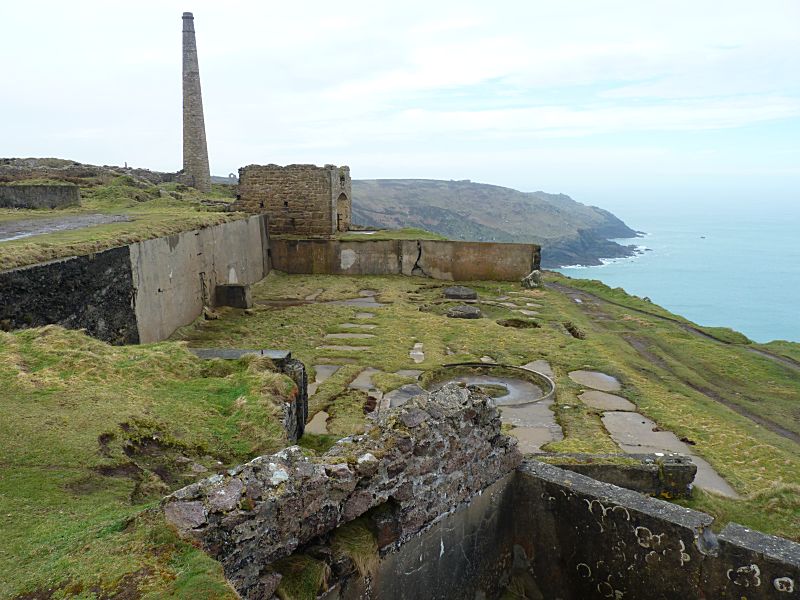
The remains of the 1906 surface workings and tin dressing floors at
Botallack Mine
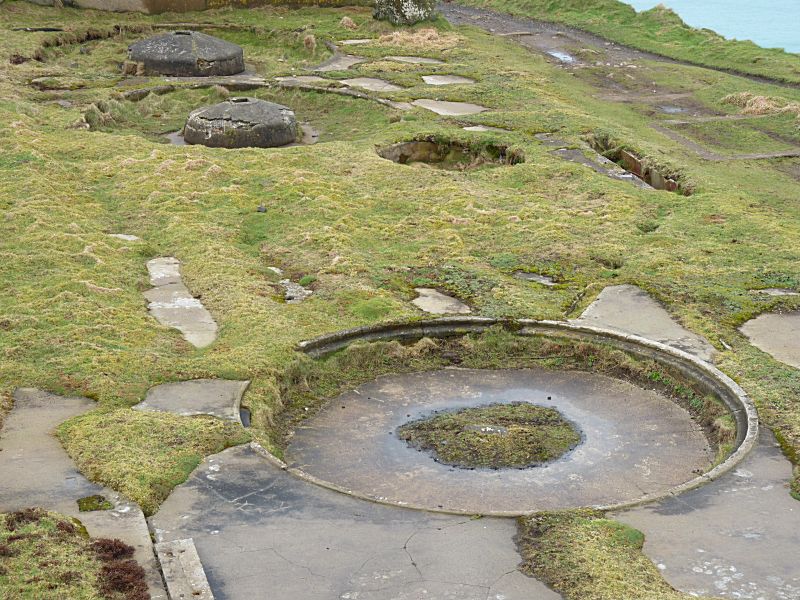
Looking closer at the buddles (both convex and concave buudles can
be seen) on the tin dressing floors.
These would have had
rotating water sprays on wooden frames to separate out the tin
The refined tin ore was then passed to an "arsenic calciner" for further processing, and where a handy - at that time - by-product of tin mining was separated out. Arsenic is of course highly toxic and poisonous, but the health and safety rules back then were perhaps not quite as well developed as they are today. All workers with arsenic would have had were cotton wool buds or rags stuffed in their nostrils, and would have been under instructions to wash frequently and not to sweat a lot! The calciner firstly roasted the refined ore on large rotating iron bed, which then gave off arsenic and sulphur in gaseous form, which was then directed up a flue to what was called the "arsenic labyrinth", or "lambreth" as it was colloquially called, where the gases condensed on its walls and the resulting arsenic powder was subsequently dug out by hand to be packed into barrels after the whole lot had cooled. Hence the use of cotton wool up the nostrils! Not good.
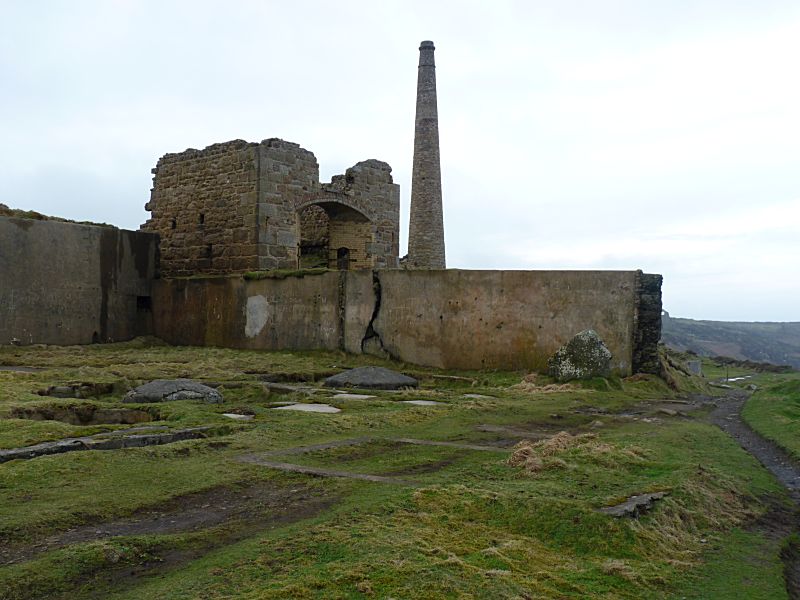
The wall at the end is showing signs of subsidence - the entrance to
the Arsenic Calciner is behind
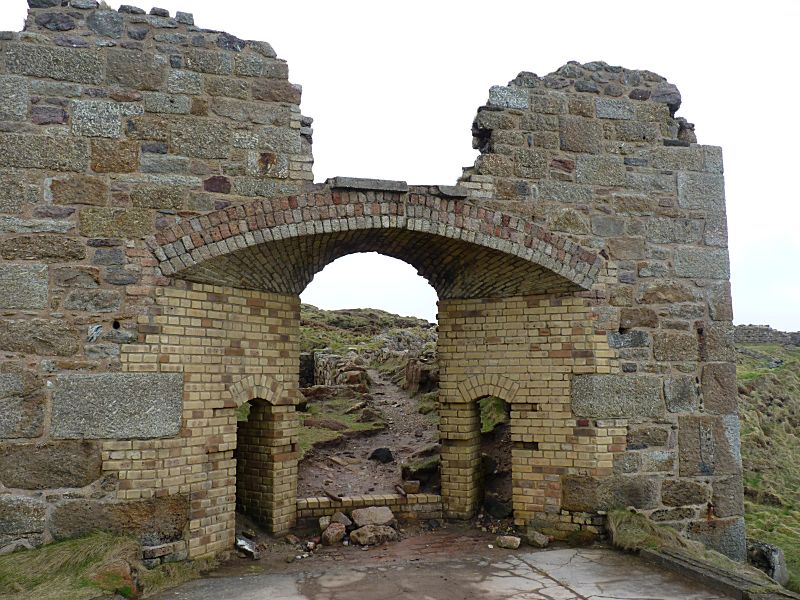
The entrance to the "Brunton" Arsenic Calciner at Botallack Mine
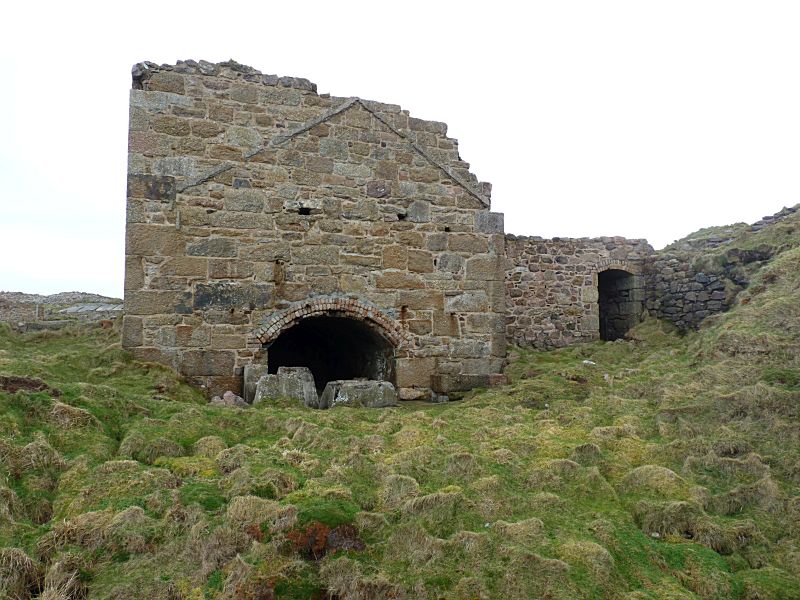
Around the side of the Calciner - where the furnace for the roasting
was sited underneath
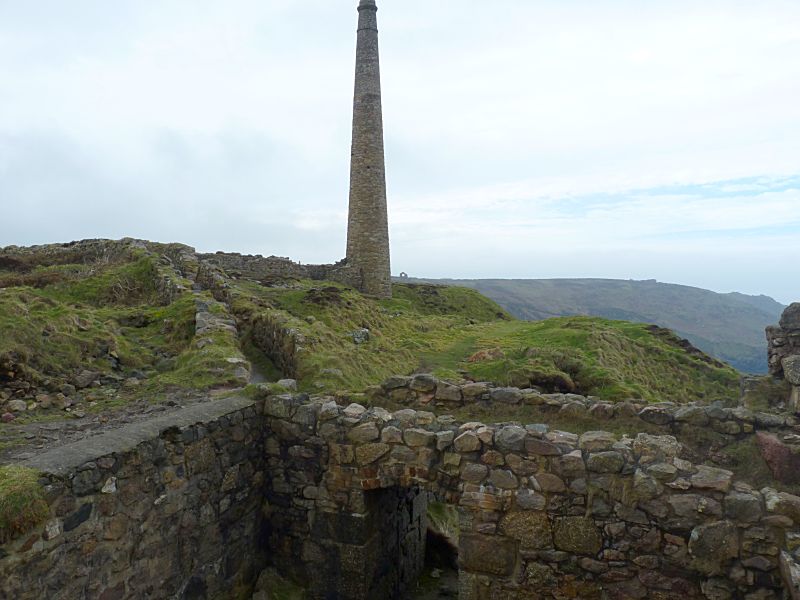
Looking up the flue from the Calciner to the Arsenic Labyrinth and
the exit chimney
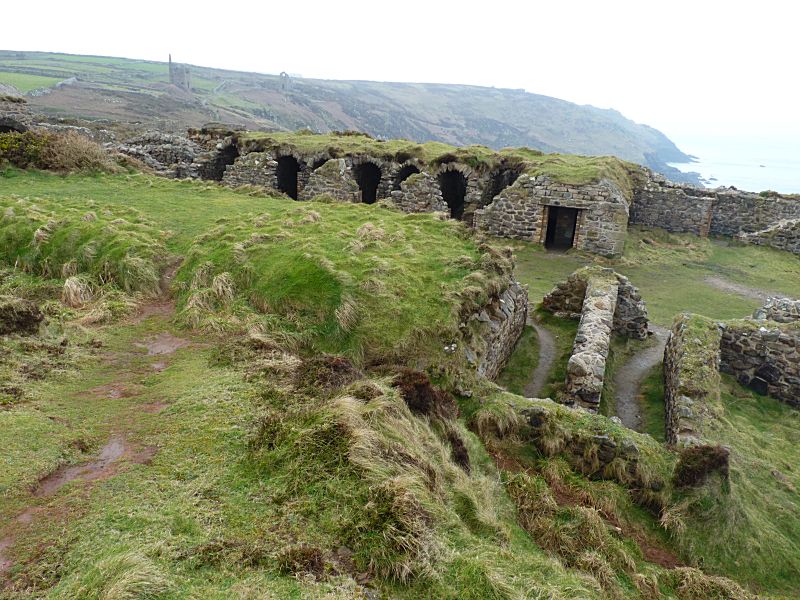
Part of the Arsenic Labyrinth at Botallack Mine where the arsenic
would have been scraped
from the enclosed tunnels and packed into
barrels
The last attempt to revive mining at Botallack, and the reason for the new tin mill, was when Allen's Shaft was sunk on the hillside above the mill. The economic reason for this was the rising of tin prices on the open market, but this was short lived, and the mine closed again in 1914. The shaft was 1400 feet deep, and still retained the possibility of re-opening, as was proved in 1984 when new head-gear was added with ideas of extending the activities of the, then, working Geevor Mine, but sadly again, this came to nothing as well. Geevor itself closed in 1990.
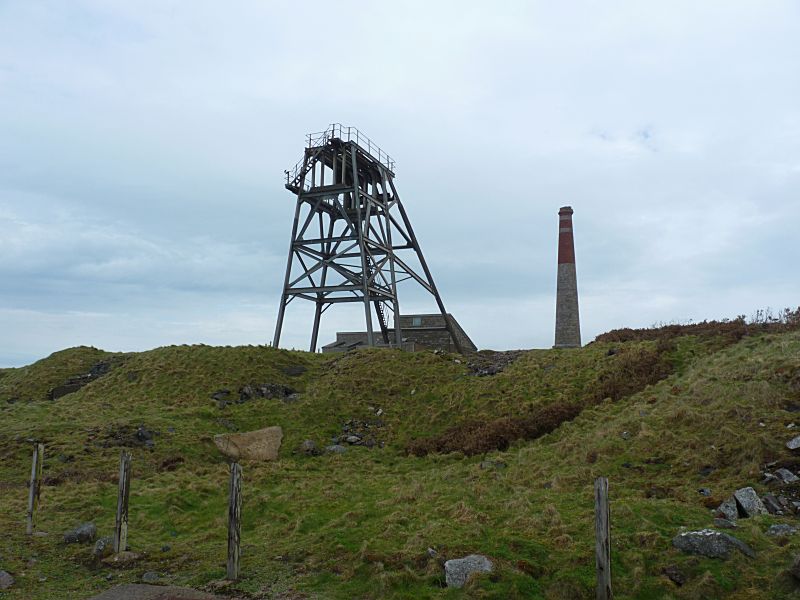
The final mining activity at the Botallack Mine was at Allen's Shaft
in 1906, which finally closed in 1914
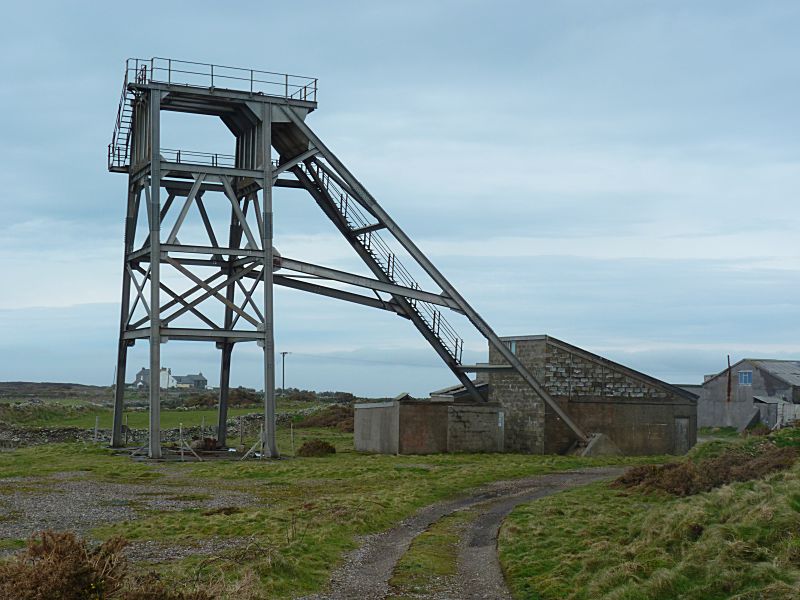
The very last attempt was when new head gear was added to Allen's
Shaft in 1984,
but again sadly, nothing more came of it, and any
hope of further mining at Botallack came to an end.
From the newest mining activity at Botallack to the oldest... mining here dates back a long way, certainly to medieval times, and some evidence of roman activity has also been found. Among the oldest surface, or open-cast, workings are these at what has been named "Gryll's Bunny", where tin has been extracted from developed pits and adits into the hillside.
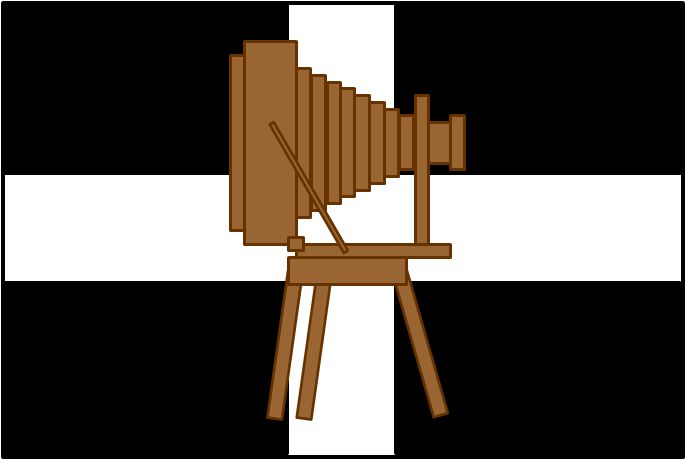

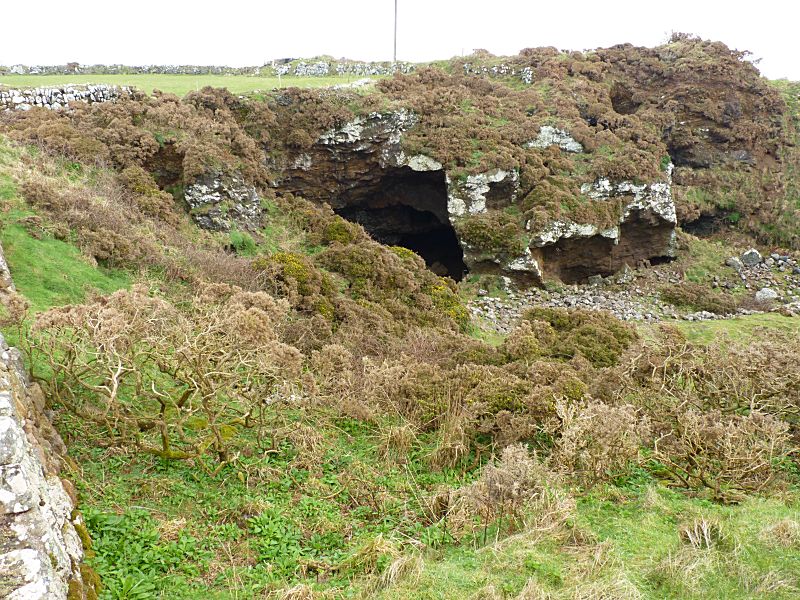
Connect with us, Like us and Follow us on Facebook!
PhotoFile Cornwall supports CoaST and Sustainable Tourism